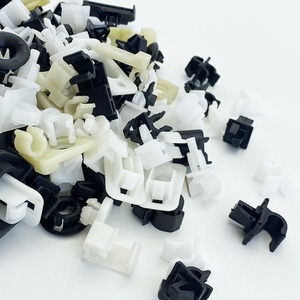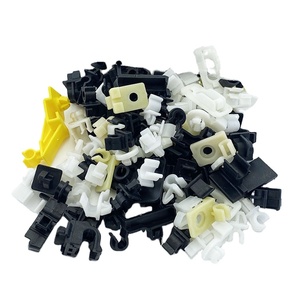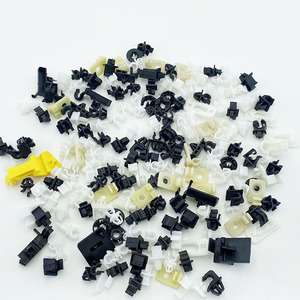
All categories
Featured selections
Trade Assurance
Buyer Central
Help Center
Get the app
Become a supplier

(123741 products available)

















































rivet support are essential components in the world of fastening, providing secure and reliable connections across a variety of applications. These fasteners are designed to join materials, often metal or plastic, by expanding within a hole to create a permanent bond. The versatility and strength of rivet support make them a preferred choice in industries such as automotive, aerospace, construction, and manufacturing. Understanding the different types, functions, materials, and usage techniques of rivet support is crucial for selecting the right product for specific needs.
There is a wide array of rivet support available, each suited to different applications and environments. Common types include blind rivets, solid rivets, semi-tubular rivets, and split rivets. Blind rivets, also known as pop rivets, are favored for applications where access is limited to one side of the workpiece. Solid rivets are often used in structural applications due to their high strength. Semi-tubular rivets offer easier installation compared to solid rivets and are typically used in light-duty applications. Split rivets, with their unique design, are used in soft materials like leather and textiles. Each type of rivet support is engineered for specific requirements, ensuring optimal performance.
rivet support serve several critical functions in fastening applications. They provide a permanent and vibration-resistant connection, which is crucial in environments subject to movement or stress. Features such as corrosion resistance, shear strength, and tensile strength are vital for maintaining the integrity of the joint over time. Some rivet support are designed with self-piercing capabilities, eliminating the need for pre-drilled holes and speeding up installation. Additionally, advancements in technology have led to the development of rivets with enhanced features, such as locking mechanisms that prevent loosening. Understanding these functions and features helps in selecting the right rivet support for specific projects.
The materials used to manufacture rivet support significantly impact their performance and durability. Common materials include aluminum, steel, stainless steel, and copper. Aluminum rivets are lightweight and corrosion-resistant, making them ideal for applications where weight is a consideration. Steel rivets, known for their strength, are used in heavy-duty applications. Stainless steel rivets offer superior corrosion resistance and are preferred in environments exposed to moisture or chemicals. Copper rivets provide excellent electrical conductivity and are used in specific electrical applications. The choice of material affects the rivet's strength, longevity, and suitability for various conditions, enabling manufacturers to tailor rivet support to specific needs.
Effective use of rivet support involves understanding the installation process and ensuring proper application techniques. Begin by selecting the appropriate type and material based on the requirements of the project. Ensure that the rivet size matches the thickness of the materials being joined. For blind rivets, use a rivet gun to expand the rivet within the hole, creating a secure bond. Solid rivets require a hammer or rivet gun for installation, while semi-tubular rivets are set using a riveting machine. Proper technique ensures a strong and reliable joint, reducing the risk of failure. Additionally, regular inspection and maintenance of rivet support can extend their lifespan and maintain the integrity of the connection.
Selecting the appropriate rivet support involves a thorough understanding of the specific requirements of your project. Considerations such as the materials being joined, the environment in which the rivets will be used, and the required strength of the joint are crucial. For instance, if the application involves joining metals in a high-stress environment, opting for solid or steel rivet support might be the best choice due to their durability and strength. Conversely, for applications requiring a lightweight solution, aluminum rivet support may be more suitable. Understanding these factors ensures that the selected rivets perform optimally under the given conditions.
The design and installation method are also important factors when choosing rivet support. Blind rivets are advantageous in situations where access is limited to one side of the assembly, while split rivets work well with softer materials. The installation technique—whether manual or machine-based—can impact the efficiency and strength of the joint. It is essential to match the rivet type with the installation method to ensure a secure and lasting connection. This consideration helps in achieving the desired results without compromising on the quality of the joint.
When selecting rivet support for outdoor applications, consider environmental factors such as exposure to moisture and temperature fluctuations. Stainless steel rivet support are often preferred due to their corrosion resistance. Additionally, the mechanical properties, such as tensile and shear strength, should be evaluated to ensure the rivets can withstand environmental stresses.
Yes, rivet support can be used to join plastic materials effectively. However, it's important to select the appropriate type, such as blind or semi-tubular rivets, which can accommodate the softer nature of plastics. The rivet material should also be considered to avoid chemical reactions or damage to the plastic.
Self-piercing rivet support eliminate the need for pre-drilled holes, making the installation process faster and more efficient. They are particularly useful in applications where speed and precision are crucial. Unlike traditional rivets, self-piercing rivets create their own hole during installation, which can enhance the overall strength of the joint.
Regular inspection and maintenance of rivet support are key to extending their lifespan. This includes checking for signs of wear or corrosion and ensuring that the rivets remain tightly fastened. In environments prone to vibration or movement, periodic tightening may be necessary to maintain the integrity of the connection.
While rivet support are versatile, high-temperature applications can pose challenges. Materials like aluminum may not perform well under extreme heat, potentially leading to joint failure. In such cases, opting for heat-resistant materials such as stainless steel can mitigate these risks and ensure the durability and reliability of the riveted joint.